
If you need a freelance travel writer or you would like to see your country, city, flight, etc., presented on the blog, drop me an email.
Find our more on Freelance Travel Writer page.
Pisa Leaning Tower is a landmark people from all over the world come to see. Even though the city is best known for its famous tower, Pisa houses more than 20 historical churches, a few medieval palaces, and important bridges over the river Arno. The place is abundant with architectural charm with a few popular pedestrian areas and narrow allies. Here is what I managed to see, including the Pisa Leaning Tower.
PISA ITALY
Pisa Italy originates from the Etruscan times while ancient Romans turned it into their colony in 180 BC. One of its advantages was that this was the only port between what was once the village of Genoa and Ostia.
The city developed over time until it became one of the four main maritime republics of Italy in the 11th century. It’s well known because of its university founded in the 14th century and as the birthplace of the famous scientist Galileo Galilei.
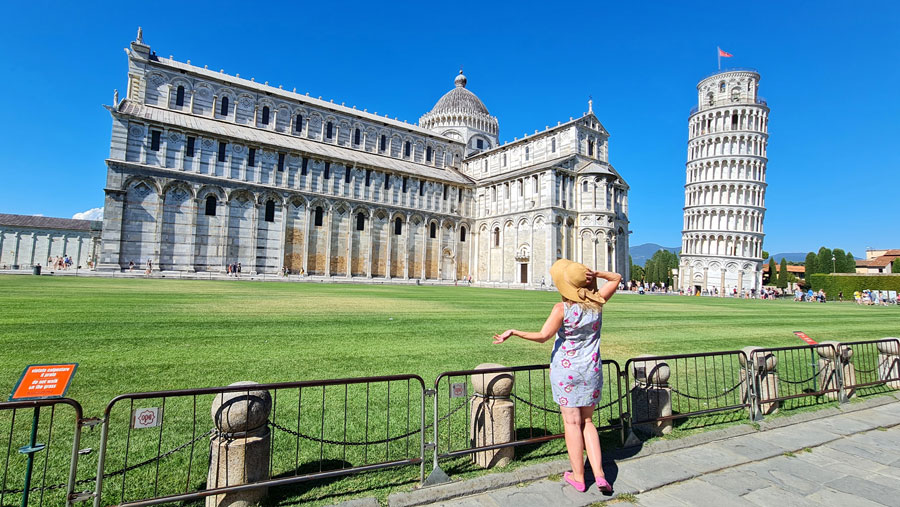
Tourists don’t spend a lot of time here. They mostly come because of the Pisa Leaning Tower, which is a pity given that the city’s allies, small restaurants, and squares are extremely charming. There is the train station called Pisa S. Rossore which is a 5-minute walk from the Pisa Leaning Tower, and visitors thus tend to miss out on all the other attractions.

As for me, my train ride from Livorno (during my tour around the best places in Tuscany) lasted for about 15 minutes. The one-way ticket was about 2 Euros and I got off at the main station, Stazione Pisa Centrale. Even if you come to Pisa for a day, this is the best way to see a few landmarks since the main street goes for about 3 kilometers to the Field of Miracles where the Pisa Leaning Tower awaits.
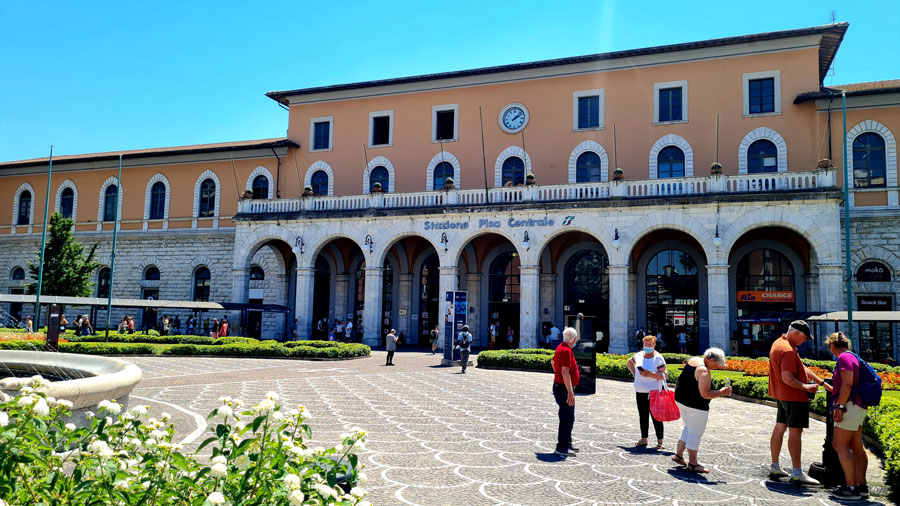
Coming from the central station, you will pass by the Vittorio Emanuele II Square, dedicated to the first Italian king. The city walls stretched through here in medieval times and the square led to one of the main streets even in the Roman era. Today, the street is known as Corso Italia, a pedestrian area perfect for shopping lovers. Pay attention to its lovely architecture.
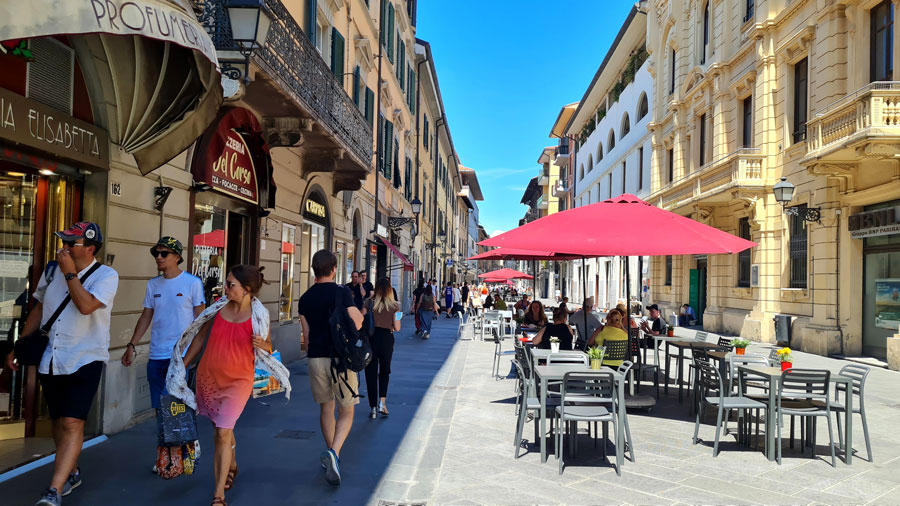
Corso Italia goes all the way to one of the most popular bridges on the Arno River called Ponte di Mezzo. It is 89 meters long, constructed as a single arch spanning the river, and made of white stone from Verona. The bridge was first erected in the 11th century but was destroyed by a heavy torrent. Another one was built and called the Arno Bridge then the Old Bridge until it finally changed its name to Ponte di Mezzo. It was home to a line of shops, buildings, and stalls. As such, it collapsed again in the 17th century, only to be erected once more as a simple arch.
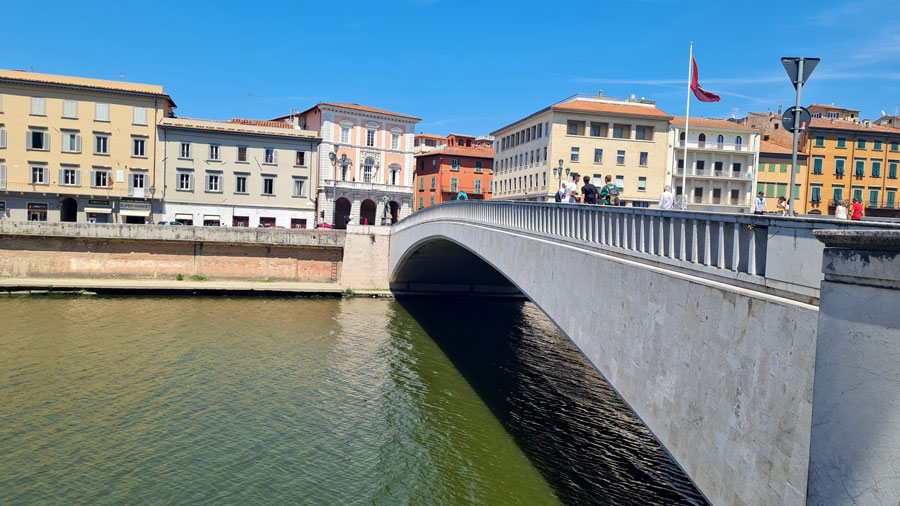
There are a few historical buildings to be seen along the river. If you have the time, take a walk and admire a picturesque waterfront slightly curving. (This is where Lord Byron used to live.) If not, notice a couple of buildings that now house the Town Hall of Pisa – Palazzo Gambacorti and Palazzo Mosca. The first dates back to the 11th century and this is where the lodge of Catalans and Florentines was located. The other palace was built in the 12th century and it is now home to 300 paintings by the French post-impressionists.
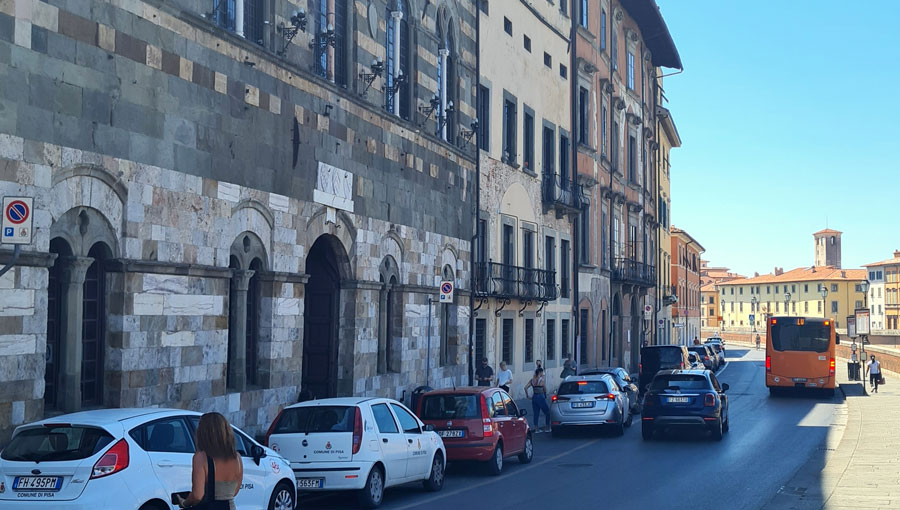
Over the Mezzo Bridge, you will come out to Garibaldi Square. The monument of Giuseppe Garibaldi, the 19th-century Italian revolutionary who contributed to Italian unification and the creation of the Kingdom of Italy, is placed here in front of the 18th-century building Casino dei Nobili. The building was commissioned by the friars of Nicosia but was later used for the entertainment purposes of the nobility. There were two hotels on both sides of the building.
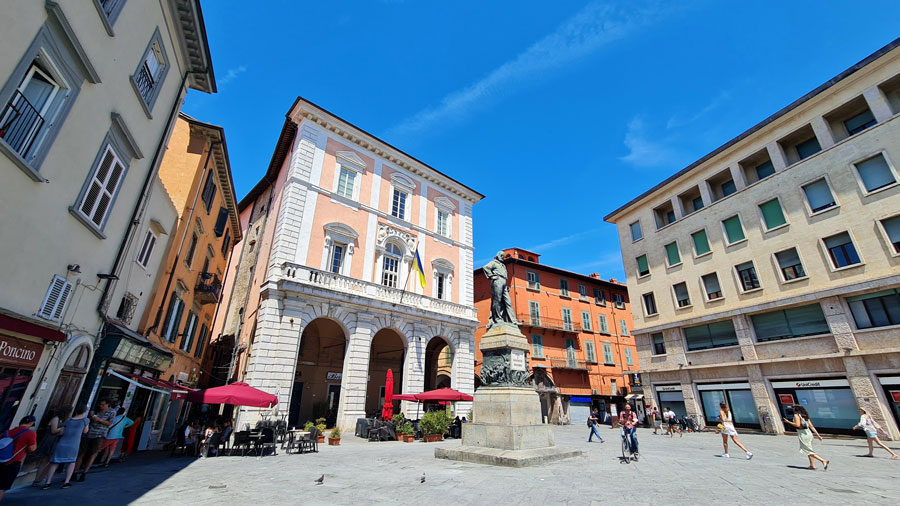
From Garibaldi Square, another landmark awaits – the so-called “narrow street” or Borgo Stretto that will take you to the Pisa Leaning Tower. This is one of the most bustling streets, even though narrow, and pierced with archways and porticos of the 14th and 15th centuries palaces. Borgo Stretto goes through the historic center of Pisa Italy. You will encounter colorful façades, mostly yellow and orange.
This is where I took numerous photos and sat for a macchiato and gelato. It was time to rest anyway.
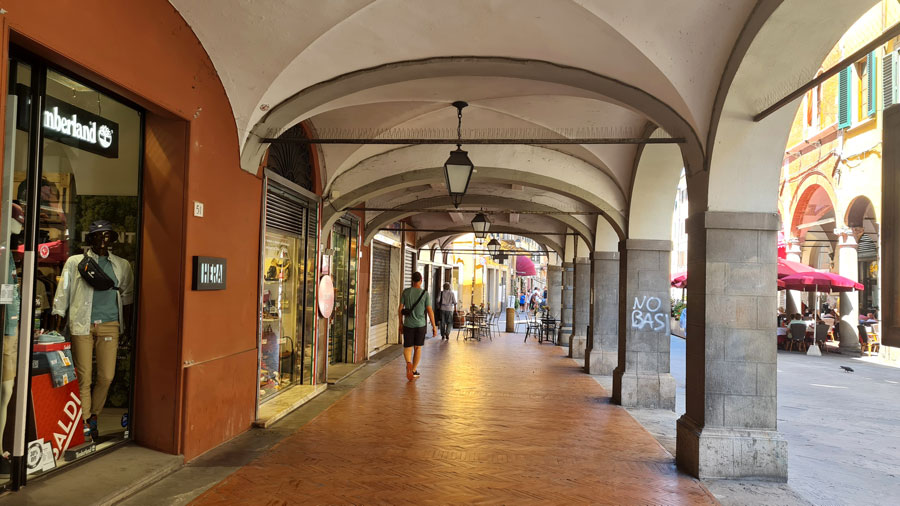
As you approach the Miracles Field (Campo dei Miracoli), there will be more and more tourists. (I was amused by the graphite saying: “Sorry, the tower is not leaning today.”) This is the busiest place in the city housing several landmarks. Besides the Pisa Leaning Tower, there is also the city’s Cathedral, Campo Santo (Sacred Field), and the Baptistery. No wonder the place was declared a World Heritage Site by UNESCO in 1987.
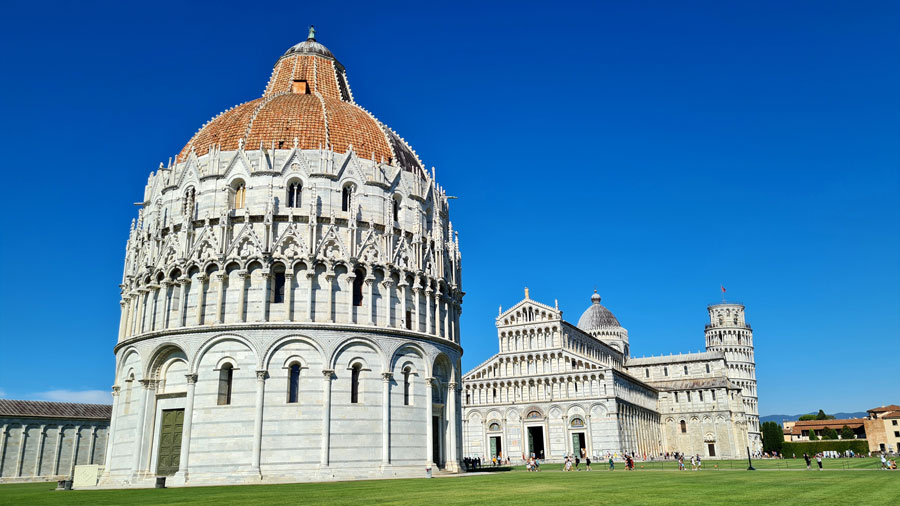
I also found the marble Fontana dei Putti or the Fountain of Angles extremely interesting. Not only its 17th-century design is quite lovely but it also served as a source of drinking water before it was installed in homes. One can still drink here especially during summer when Pisa tends to get very hot.
The Pisa Leaning Tower is the 56-meter bell tower of the Cathedral. It started to lean at the beginning of the construction in the 12th century due to the soft soil on which it was built. The construction began in 1173 but it was interrupted a few times due to wars and depths. The Pisa Leaning Tower was thus finished as late as the mid-14th century.

They say that conquerors from Pisa came back from the lucrative invasion of Palermo in Sicily in 1063 and decided to build a huge complex to honor the victory. That’s how the construction of the Miracles Field began. Nobody knows who designed the Pisa Leaning Tower, even though a few architects worked on its construction. When they reached the third floor, it was clear that the tower was not only leaning but falling two millimeters every year. Today, the Pisa Leaning Tower is about 5 meters off the vertical.
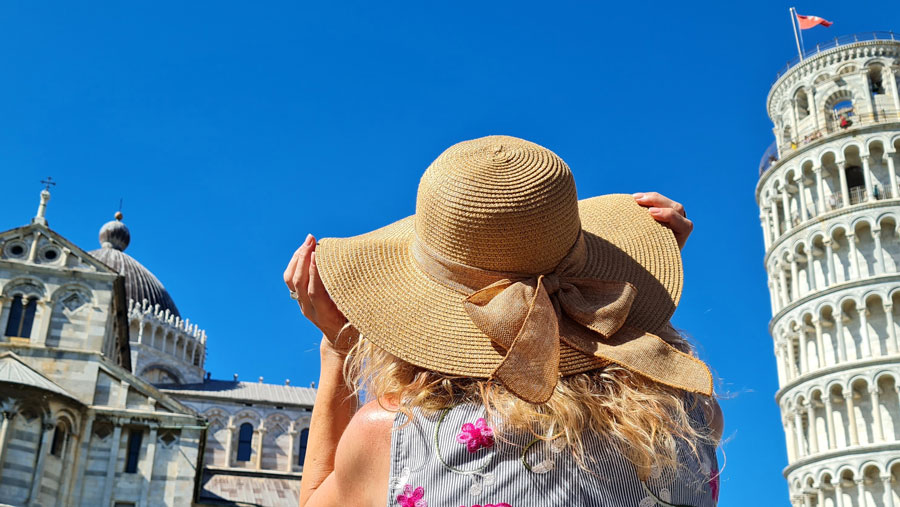
While you gaze at the tower, try to remember how Galileo Galilei threw two different-sized cannon balls from the top in the 16th century in order to demonstrate that their time of descent was independent of their mass.
Bear in mind that the whole square is very busy and it will be literally impossible to take a decent photo of the Pisa Leaning Tower as you may have seen on Instagram. The best time to visit is probably during lunchtime when there are fewer tourists. But the place will not be empty though, not even the tower itself.
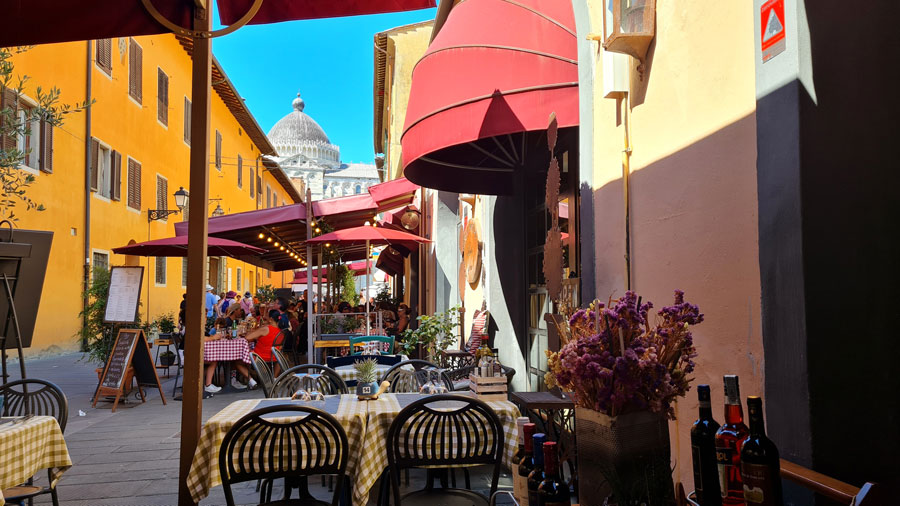
Use your time to stroll along the lovely streets of this charming city or enjoy Italian pasta in small allies surrounding the Cathedral. These are the moments that will remind you that you are in Italy!
Next: DISCOVER LIVORNO, ITALY
The full ITALY SERIES
If you need a freelance travel writer or you would like to see your country, city, flight, etc., presented on the blog, drop me an email.
Find our more on Freelance Travel Writer page.
I am looking forward to working with you.




© 2024 Glimpses. All rights reserved. No part of the site may be copied or reproduced without written permission. Web Design & SEO Services – Lavit Solutions.